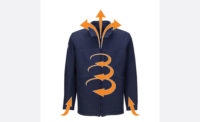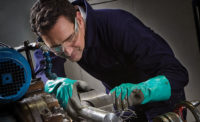Protecting the hands of “industrial athletes”

Shawn Roll has expertise in a specific type of “handiwork.”
Roll, an assistant professor at the USC Chan Division of Occupational Science and Occupational Therapy, focuses primarily on research for the prevention, rehabilitation and assessment of musculoskeletal disorders like carpal tunnel syndrome (CTS). Thanks to a new $2.3-million research grant from the Centers for Disease Control’s NIOSH, the scientist will be studying the early stages of CTS in dental hygiene students.
Roll refers to adults in the workplace as “industrial athletes” — a nod to his sports background — and treats them as such, working to prevent work-related injuries and sustain functional when an injury is sustained.
According to Roll, what is known about CTS stems largely from a clinical perspective, when somebody already has identifiable symptoms such as numbness, tingling or weakness in the hand.
“We’ve been studying carpal tunnel syndrome for more than 20 years, longer than that even, and we don’t understand what causes it,” he explained. “We have a collection of different ideas and know that repetitive motion, forceful gripping, vibration and those types of things can lead to it, but not always and not in every individual. You can put five individuals in the same job with the same physical exposures and three of the five will develop it while two will not.”
As principal investigator of the four-year grant, Roll and his team will be using sonography to examine populations of dental hygiene students at both USC and Loma Linda University. Roll and his interdisciplinary collaborators determined that dental hygiene students are an ideal target population for the study.
“When students come into the program, they’re young and typically don’t have any problems, and less than 20 percent of them complain of any pain or discomfort in their hands,” he said. “By the end of their two-year program, Dr. Forrest has documented up to 66 percent, or two-thirds of them, having some sort of pain in hands due to repetitive activities they’re doing in holding the scaling instruments. So there is something going on there.”
CTS is a widely known problem in the profession, as more than half of dental hygienists report having CTS at some point during their career. Yet its progression is less well understood.
Using sonographic imaging, Roll determined that the median nerve — a major peripheral nerve in the upper limb of humans and other animals — is enlarged in chronic CTS patients when compared to asymptomatic individuals, where the nerve is much smaller. Identifying a tipping point between those two states could help target interventions and prevent CTS in its early stages.
“Somehow, there has to be a transitional point to get from the small to the large,” he said. “Using the imaging, we’ve actually done other preliminary work in an animal model where we’ve been able to replicate that progression in the size of the nerve.”
By collecting sonographic images from dental hygiene students and a separate control population, Roll’s team will look for changes in median nerve morphology — the nerve’s size and structure — the first signs of which could indicate the beginning of CTS. The team will also use nerve conduction testing to collect data about the physiology of the nerve.
At the end of the study, Roll hopes that his research will lead to earlier identification for individuals who might be progressing toward CTS. He stresses that research on the early stages is crucial to prevention.
“Our goal is to develop some sort of predictive model to show how imaging will show the progression of CTS, so we can develop this model and then implement it in the workplace where high-risk workers are screened every six months or year using the imaging,” he said. “If we start to see the changes, we can then intervene.”
Source: https://news.usc.edu
Looking for a reprint of this article?
From high-res PDFs to custom plaques, order your copy today!







